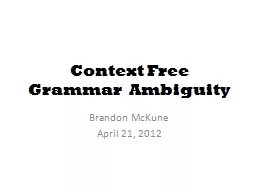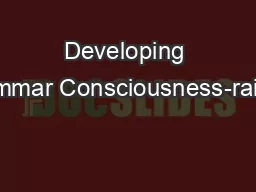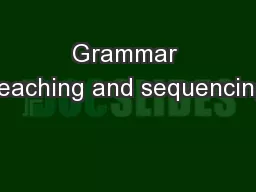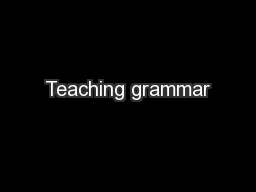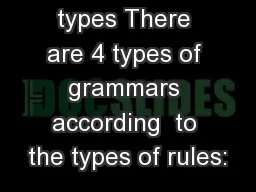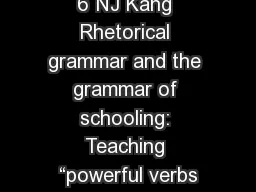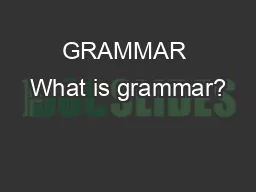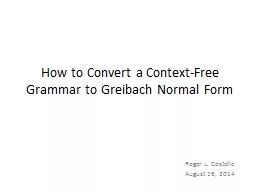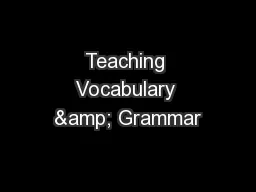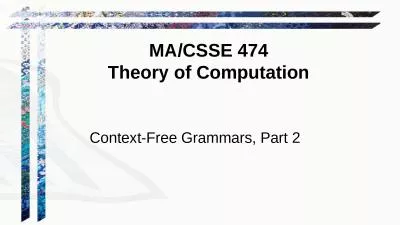PPT-Teaching Grammar in Context:
Author : faustina-dinatale | Published Date : 2019-12-02
Teaching Grammar in Context Through Meaning CWP004 PDPSaturday mode201920 Semester 1 Dr Leo Francis Hoye leohoyegmailcom 1 Wake up in a good mood
Presentation Embed Code
Download Presentation
Download Presentation The PPT/PDF document "Teaching Grammar in Context:" is the property of its rightful owner. Permission is granted to download and print the materials on this website for personal, non-commercial use only, and to display it on your personal computer provided you do not modify the materials and that you retain all copyright notices contained in the materials. By downloading content from our website, you accept the terms of this agreement.
Teaching Grammar in Context:: Transcript
Download Rules Of Document
"Teaching Grammar in Context:"The content belongs to its owner. You may download and print it for personal use, without modification, and keep all copyright notices. By downloading, you agree to these terms.
Related Documents


